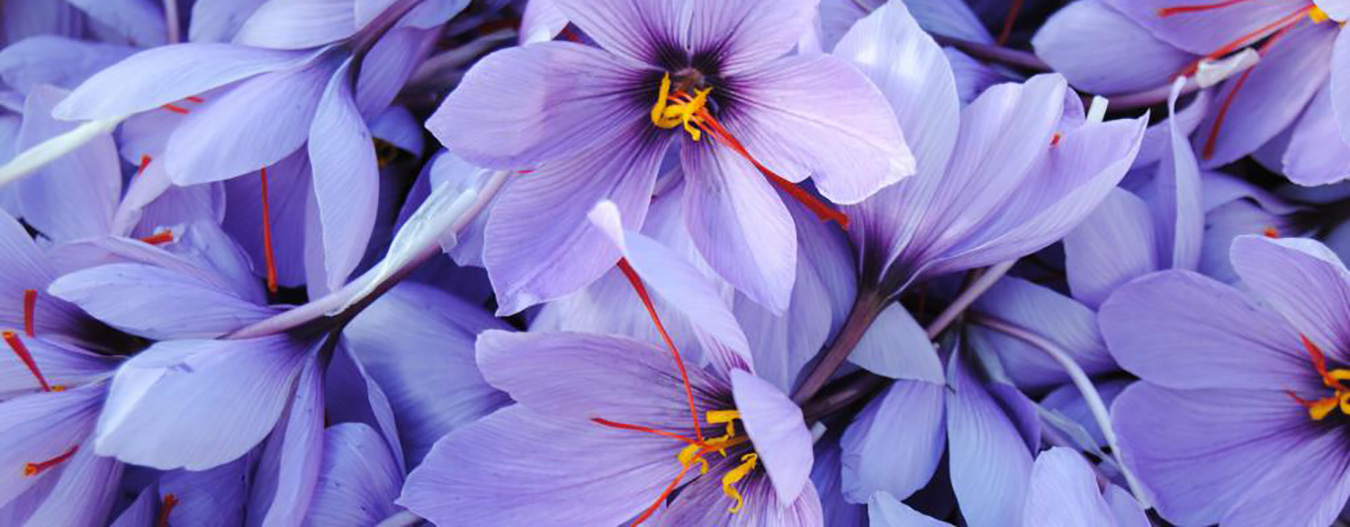Trustworthy Supplier is supplied based on international standards in and many tests are carried out to measure the quality of saffron. In order to cover all needs of its customers, our own networks produces and packages all of its saffron products based on the approval of the quality control unit in a fully sanitary area and benefiting from engineers and experts in the food industry.
The following is a summary of the Iranian saffron quality assessment tests:
- The color test (extraction and detection of color additives)
- The color strength test and evaluation of the levels of crocin, safranal, and picrocrocin
- Moisture content
- Total ash content
- Acid insoluble ash
- Amount of external substances related to the environment and flower residues
- Cold water-soluble extract
Tests and Standards
Implementation of standards improves quality and increases exports, thus increasing national income. Based on the quality factors of saffron, The Institute of Standards and Industrial Research of Iran (ISIRI) has compiled saffron standards, which are as follows:
National Standard 259-1: Titled “Saffron & Its Properties” (includes: specification of packaging, marking, and sampling)
National Standard 259-2: Titled “Saffron & Its Testing Methods” (on saffron testing methods):
- The amount of the style along with the stigma
- The moisture content
- The total ash and acid insoluble ash contents
- Cold water-soluble extract
- Amount of external substances related to the plant and environment
- (2634
National Standard 3659: The saffron sampling method
National Standard 2198: Searching and ordering enterococci
National Standard 4806: The microbiological quality of surfaces
National Standard 4557: The procedure of using the hazard analysis and critical control points (HACCP) system
National Standard 2946: The microbial most probable number (MPN) test for the enumeration of Escherichia coli
National Standard (10899-2): To measure the amount of mold and yeast (per gram)
National Standard 9432: Comprehensive method for the enumeration of sulfite-reducing bacteria growing under anaerobic conditions
In addition to complying with national standards, saffron must comply with international standards to be exportable to foreign markets.
A standard is defined as follows: It is a document that has been drafted through a consensus and approval of the determined pillars, that provides rules, guidelines and/or specifications for activities or their results for general and continuous use, and that aims at achieving an optimal order in a given category.
Industry owners, customers, consumers, society, government, shareholders, and manufacturers are involved in drafting the document of a standard. The standard is the necessity of society.
A common standard for saffron in the world is ISO 3632. In Iran, The Institute of Standards and Industrial Research of Iran (ISIRI) and The Food and Drug Administration of Iran (IFDA) are responsible for compiling relevant standards as well as controlling the quality of saffron.
Kinds of cheating in saffron
One of the cases of saffron adulteration is use of chemical and artificial dyes to dye saffron, which is prohibited in the saffron industry. From among these dyes, the most common are as follows: Tartrazine, Orange II, Amaranth, Sunset Yellow, Ponceau 4R, Quinoline Yellow, and Azorubine (Carmoisine).
Another way of cheating in sale of saffron is giving short weight. From among other cases of cheating in saffron, we can refer to addition of salt and sugar to saffron, which is done to increase its mass.
One of the ways to distinguish pure saffron from the adulterated one is to taste it, and it must have a bitter taste. But if it tastes sweet or salty, it means that some kind of salt or sugar of alkaline origin has been added to it.
In total, in adulterated products, the packaging does not contain the manufacturer’s complete and accurate information.
According to the national standard, the following should not be seen in high quality saffron:
– Undesirable physical items including: Presence of hair, yarn, pebbles and sand, live or dead insects and ticks, fungi and mold visible with the naked eye, as well as contamination by rodents and birds.
– Inappropriate chemical substances that are measured in accordance with the relevant standards, and that must be within a proper range.
In general, due to a large number of cases of cheating in saffron, which is hard for public to detect, it is strongly recommended that you buy saffron officially licensed by The Institute of Standards and Industrial Research of Iran (ISIRI) and The Food and Drug Administration of Iran (IFDA). Obviously, in order to make sure, you must see the standard logo, the production license and/or the health code on the packaging of products.
The standard properties of saffron
Sensory and physical properties
Flavor and aroma: Saffron must have its own aroma and flavor; a slightly bitter and spicy taste and free of any external taste and odor.
Appearance: Different types of saffron should be of as uniform color as possible and should not be stuck together due to excessive moisture or inappropriate drying.
Microbial properties:
These properties are determined in accordance with the following table and must comply with the relevant national standard.
| Row | Microbial properties tested in saffron | Test results | Acceptable results | The testing method |
| 1 | Enterococci | Negative | Negative | 2198 |
| 2 | Escherichia coli | Negative | Negative | 2946 |
| 3 | Sulfite-reducing Clostridium spores | Less than 10 | 100 | 9432 |
| 4 | Molds | 10 | 1000 | 10899-2 |
Metal contaminants
Allowable limits are as shown in the table below.
Metal contaminants found in saffron
| Name of contaminants | The maximum result acceptable (mg per kg) | Test results |
| Arsenic | 3 | Less than LOQ |
| Lead | 2 | Less than LOQ |
| Mercury | – | – |
Chemical properties
These properties and other properties of thread and cut-thread saffron should comply with the table below.
| Row | Chemical properties tested in saffron | Grading in the Iranian Standard | The testing method | ||||
| Cut-thread | Thread | ||||||
| Superior | 1 | 2 | 3 | 4 | |||
| 1 | Style with stigma (maximum mass %) | 0.5 | 5 | 10 | 20 | 30 | National Standard
259-2 |
| 2 | Amount of external substances related to the plant
Amount of external substances related to the environment |
0.1
Negative |
1
Negative |
1
Negative |
2
Negative |
2
Negative |
National Standard
259-2 |
| 3 | Moisture and volatile matter (mass %) | 10 | 10 | 12 | 12 | 12 | National Standard
259-2 |
| 4 | Total ash content based on dry matter | 5.5 | 6 | 7 | 7 | 7 | National Standard
1197 |
| 5 | Acid insoluble ash content based on dry matter | 0.5 | 1 | 1.5 | 1.5 | 1.5 | National Standard 1253 |
| 6 | Cold water-soluble extract (mass %) | 65 | 65 | 65 | 65 | 65 | National Standard 1619 |
| 7 | Picrocrocin based on dry matter
(Absorption at a wavelength of 257 nm) |
85 | 80 | 70 | 70 | 70 | National Standard
259-2 |
| 8 | Safranal based on dry matter
(Absorption at a wavelength of 330 nm) |
20-50 | 20-50 | 20-50 | 20-50 | 20-50 | National Standard
259-2 |
| 9 | Crocin based on dry matter
(Absorption at a wavelength of 440 nm) |
220 | 220 | 180 | 150 | 140 | National Standard
259-2 |
| 10 | The extraction and detection of color additives | Negative | Negative | Negative | Negative | Negative | National Standard
259-2 |
| 11 | Marking | Appropriate | Appropriate | Appropriate | Appropriate | Appropriate | |
If you need more information, you can visit the official website of The Institute of Standards and Industrial Research of Iran.
(ISIRI): www.isiri.ir



